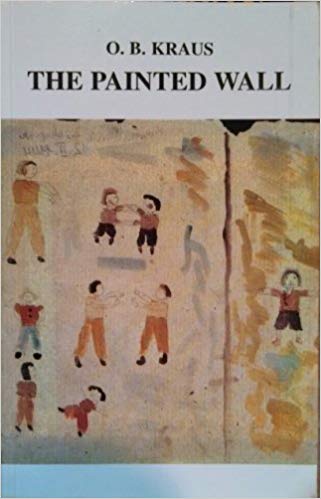File:1994 Kraus.jpg
1994_Kraus.jpg (321 × 499 pixels, file size: 21 KB, MIME type: image/jpeg)
Title
Ota B. Kraus. The Painted Wall / The Children's Block (Tel-Aviv : Yaron Golan Publ., 1994). Repr. London: Ebury Press, 2019.
- Also translated into German (2002).
Abstract
A semi-fictional account, based on his own personal experience.
"In the novel The Painted Wall, Otto (Ota) B. Kraus writes about his own experience in Auschwitz during WWII. Otto was one of the instructors in the children's block and his (future) wife Dita, was the librarian for the children, of whom only a handfull survived. The book, which was originally named "The Diary", was written after the war. The story of a diary is but a literary introduction, yet the events described in the book are real. The Painted Wall tells the true story of 500 Jewish children who lived in the Czech Family Camp in Auschwitz-Birkenau between September 1943 and June 1944. The children were kept on a Children's Block supervised by the notorious Dr. Mengele, where their instructors organized clandestine lessons, singalongs and even staged little plays and charades. The Children's Block was intended to provide the Nazis with an alibi to refute the rumors of the Final Solution. As long as the Children's Block existed, it was a shelter and haven for the hundreds of children, who soon afterwards perished in the gas chambers."--Publisher description.
About the Author
Ota "Otto" B. Kraus (1921-2000) was born and raised in Prague to a Jewish family. In May 1942 he was confined with his family to Ghetto Terezin . In December 1943 he was deported to Auschwitz, where at the time the Nazis had established a special family camps for those arriving from Terezin. Otto became one of the children’s counselors on the Kinderblock, a special barracks where the children were kept during the day. After a few months the camp was liquidated and the inmates were almost all sent to the gas chambers. Otto was one of the few selected to survive as labor force. A fervent Zionist, after the war he settled to Israel, where he was a teacher and writer.
File history
Click on a date/time to view the file as it appeared at that time.
| Date/Time | Thumbnail | Dimensions | User | Comment | |
|---|---|---|---|---|---|
| current | 14:54, 20 January 2020 |  | 321 × 499 (21 KB) | Gabriele Boccaccini (talk | contribs) |
You cannot overwrite this file.
File usage
There are no pages that use this file.

